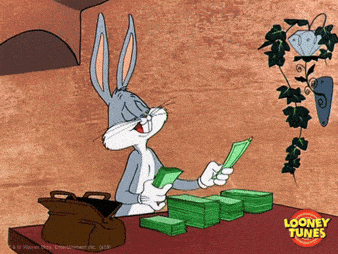- Luci Money Moves
- Posts
- Budgeting 101 - Part 2
Budgeting 101 - Part 2
Resources And Strategies to Crush Your Budget

Last Time on Budgeting 101…
Previously, in Part 1, we tackled the basics—why budgeting is essential, myths that need busting, the 50/30/20 rule, and how prioritizing your money can seriously change your financial game.
🚨Missed it? No Sweat!🚨
Catch up on “Budgeting 101 Part 1” here before diving into the juicy details of tools and strategies.
The Best Budgeting Tools Are Simple & Effective
Finding the right budgeting tool is kind of like dating—you want something reliable, easy to work with, and preferably low-maintenance (aka free or cheap). The right tool can help you stay on top of your finances without making you want to rip your hair out.
Why Tools Help
Apps and templates take the headache out of budgeting. No need to manually track every coffee or impulse Amazon purchase. Many tools offer automation, pulling in transactions from your financial accounts (bank, cards, etc.) and categorizing them for you. Because let’s be real—if budgeting required doing math by hand, we’d all just take a nap instead.
Top Picks for Budgeting Tools
Budgeting Apps for Beginners
These apps are perfect for anyone just getting started or looking for a straightforward way to manage their money. All three are available on web, iOS, and Android.
Goodbudget | The Free Option (or Pretty Close to It!) |
What it does | Uses the envelope budgeting method, so you can allocate funds into digital “envelopes”. Think separate pockets for groceries, bills, and fun money. |
Cost | Free version: Includes 1 account, 2 devices, 10 regular envelopes (for core budgeting categories like groceries and rent), and 10 extra envelopes (for optional specific categories like vacation or emergency fund). | Premium “Plus Plan”: Unlimited envelopes and accounts, up to 5 devices, and 7 years of transaction history. For $10/month or $80/year |
Key Features | Expense tracking, budget sharing, debt tracking, and a Knowledge Base to help you master Goodbudget like a pro. |
PocketGuard | The Middle Ground Option (For the "I Can Spare a Few Bucks" Crowd) |
What it does | Tracks income, expenses, and savings goals, then tells you exactly how much money you have left to spend this month. |
Cost | Free-trial for 7-days; Subscription for $12.99/month or $74.99/year. |
Key Features | “In My Pocket” tool for available spending, auto-categorization, and spending limits. The paid version unlocks unlimited financial accounts, custom categories, debt payoff planning, and more. |
YNAB (You Need A Budget) | The Premium Option (For the "I Got a Full-Time Job, Let’s Go!" Crowd) |
What it does | Uses a zero-based budgeting system where every dollar has a job. |
Cost | 34-day free trial then $14.99/month or $109/year |
Key Features | Real-time expense tracking, goal setting, and educational resources (webinars, guides). |
Still unsure about which app works best for you? Most apps offer free trials, so use that to your advantage! Or, if you’re feeling strategic, keep hopping from one free trial to the next and enjoy premium features without ever paying a dime (#budgetingHack-this did not come from me…). There are plenty of options out there, so don’t be afraid to shop around and find the perfect fit for YOU.
Spreadsheet Templates for the DIY Crowd
Prefer a hands-on approach? Free spreadsheet templates (Google Sheets or Excel) are a great way to DIY your budget without app subscriptions. Here’s how to find reliable ones:
Where to Look:
📋 Google Sheets Template Gallery: Official, pre-made templates (File > New > Template Gallery).
💻 Reputable Finance Blogs: Templates from The Budget Mom, NerdWallet, or Vertex42 are well-tested.
👥 Reddit/Forums: Communities like r/personalfinance often share free, user-created templates.
Features to Prioritize:
✅ Simplicity: Avoid overly complex layouts. Look for clean categories (Needs/Wants/Savings).
✅ Visual Appeal: Color-coding or progress bars make tracking more engaging.
✅ Automation: Some templates auto-calculate totals—helpful for math-haters.
✅ A system that makes sense to you.
Example Templates (No Login Required):
Pro Tip: Add some fun categories like “Taco Fund” or “Concert Tickets” to keep things engaging. Because let’s be honest—budgeting is way easier when you have money set aside for the things you actually enjoy.
Advanced Strategies to Level Up Your Budget
Automate Your Savings
Make saving money effortless. Set up auto-transfers to your savings account right after payday. Even if it’s just $10 a week, it adds up. Future You will thank you.
Regular Check-Ins
Spend 10 minutes every week or month reviewing your budget. Overspent on takeout? Adjust for next week. Staying flexible is key.
↪ Monthly check-ins work for most people, but if you like more control, weekly
might be better for you!
The “No-Spend” Challenge
Try a "no-spend" week (or weekend); Popularized by frugality bloggers, this experiment helps identify unnecessary spending. Only buy essentials. You’ll be amazed at how much you don’t need. Then, put that extra cash toward something meaningful—like paying off debt or finally buying that larger purchase you’ve been eyeing.
How to Make Budgeting Work for YouClosing Remarks :)Budgets aren’t set in stone—they evolve as your income, expenses, and goals change. The key? Stay flexible. And don’t forget to celebrate small wins! Saved an extra $20? That’s a win. Didn’t stick to the budget perfectly? No big deal—just adjust and move forward. Budgeting is about progress, not perfection. Time to crush your budget and level up your finances! Till Next Time Folks! Mitch |  Budget Responsibly! |
Reply